Everything you thought you knew about bass fishing … is wrong?
Thanks to forward-facing sonar, bass anglers are discovering what’s myth and what’s truth about how fish behave
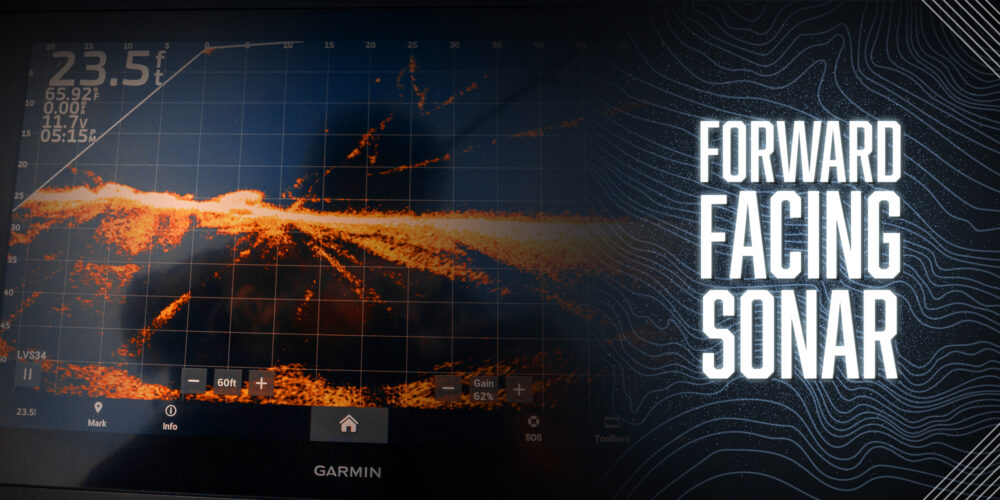
Hardly a season passes without claims of a bass-fishing breakthrough – some new lure, technique or piece of equipment to raise eyebrows, fuel a trend and stoke industry sales.
But advances in forward-facing sonar (FFS) technology over the past few seasons have turned the industry – and the sport of bass fishing itself – on its ear.
FFS is rewriting the textbooks on bass behavior. It’s shaken the grip of tightly held tenets, throwing exception and nuance into our understanding of bass’ use of structure and cover. It has awakened us to the wanderlust of fish once largely believed to be homebodies, demonstrating that they move more and roam further than we ever believed.
Perhaps its most exciting impact has been in the angler-bass confrontation, the head-to-head play of predator and prey. It’s an underwater reality show in a realm once hidden from the fisherman’s eyes.
Whether used to win a major tournament or satisfy an angler’s bottomless curiosity, FFS is paving the way to discovery, teaching us, humbling us, revealing new techniques and refining old ones, opening avenues to new lures and manners of presentation.
Nowhere has the impact of FFS been more profound than in the professional circles. Rare is the MLF tournament today in which forward-facing sonar is not a major factor. Many MLF anglers have already become accomplished students (if not acknowledged experts) in its usage.
VanDam’s Tips and Observations
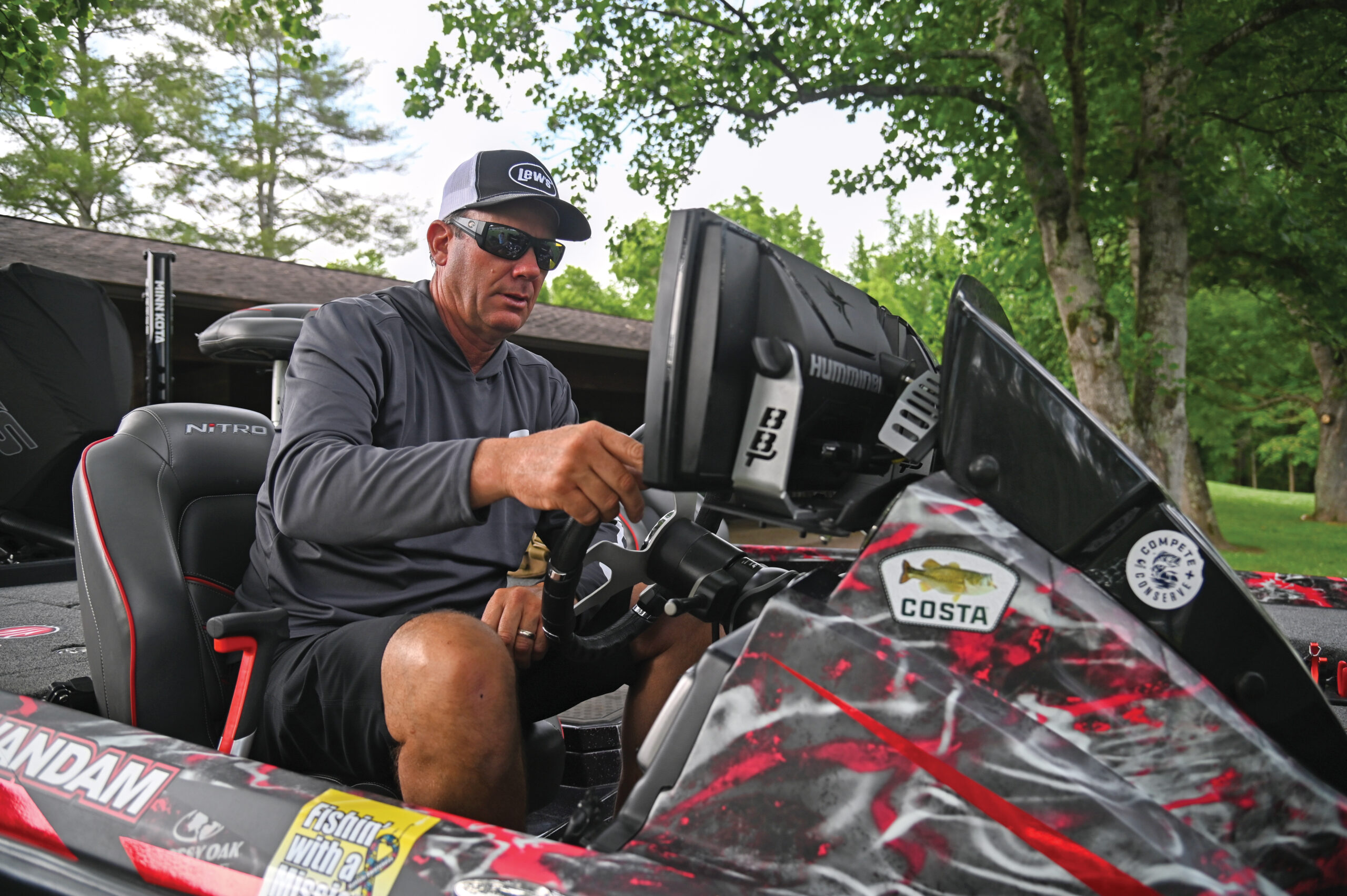
______
Drop-shot and Damiki rigs are two follow-up baits Kevin VanDam employs in conjunction with FFS.
“A 1/8- or 1/16-ounce weight slows the sink rate of my drop-shot,” he said. “You can watch the fish follow it down.”
Weighted crankbaits play a bigger role today, too. Carefully weighted Strike King 5XD and 6XD crankbaits deliver a tantalizing slow rise when paused and enable him to keep his bait in the strike zone of bass positioned at 15 to 20 feet.
“I can stop it, twitch it, fish it almost like a jerkbait,” he said.
VanDam hails Humminbird’s MEGA Live TargetLock as a major advancement in the category. The transducer rests on a turret that operates independently of trolling motor position. It allows him to hold a reading on a targeted fish while adjusting boat position.
______
The New Space Race
For bass fishing legend Kevin VanDam, watching fish react to a lure in real time truly is angling’s version of Neil Armstrong’s “One giant leap for mankind.”
“There’s definitely a space race in technology going on right now,” VanDam said, citing Humminbird’s announcement of MEGA Live TargetLock, an advancement that frees transducer focus from trolling motor direction. “I’ve been on pro bass tours for 32 years now, but in the last few years, technology has made the biggest difference in our game. It’s been one of the most impactful things I’ve seen in my career.”
VanDam rattles off a litany of advances from improved color-image 2D sonar, side imaging, downscan capability and MEGA 360 through map downloads and auto-chart capabilities. Each has added an incremental layer of knowledge, awareness and capability to his game.
“Not one guy on tour has fewer than four graphs on his boat today,” VanDam said. “And most have five, because you have to. A year ago, some guys on tour were still fishing without forward-facing sonar. Now it’s an absolute must. It’s that valuable.”
No prior generation of electronics advancement has proven quite as illuminating – or as humbling – as forward-facing sonar.
“It’s taught me that a lot of things that I thought were true about bass are false,” VanDam said. “I used to think bass pretty much always relate to cover or structure, but they randomly move around more in open water than I ever believed.”
“It’s taught me that a lot of things that I thought were true about bass are false. I used to think bass pretty much always relate to cover or structure, but they randomly move around more in open water than I ever believed.”
Kevin VanDam
The value of FFS varies with lake and situation, but most anglers agree that it shines on lakes in which bass suspend. And “shine” is an apt metaphor for how he employs his sonar beam.
“We call it ‘flashlighting’ because you’re shooting a beam around just looking for fish,” he said, describing how he’s beamed in on prespawn bass on Table Rock Lake smallmouth bass on the massive flats of Lake St. Clair. “You’re hunting a needle in a hay field normally when working open water. With MEGA Live, I can go in the center of a creek and cast to pods of shad or schools of bass as I see them.”
FFS is dictating lure selection with the biggest beneficiary being the jerkbait category.
“The jerkbait has been the most effective tool for forward-facing sonar because it fishes within the water column and you can draw fish in with it,” VanDam said.
FFS has forced him to broaden his range of presentation as well.
“One of my faults has been my lack of patience,” he said. “I always want to cover water. But forward-facing sonar has taught me to settle down. It’s taught me the importance of cadence change. Sometimes they want it a certain way. Sometimes they want it dead-sticked.
“You see fish. You see bait. And you see the two connect.
That’s what’s so cool and rewarding. It allows you to sight fish where you can’t really see.”
Wheeler’s Tips and Observations
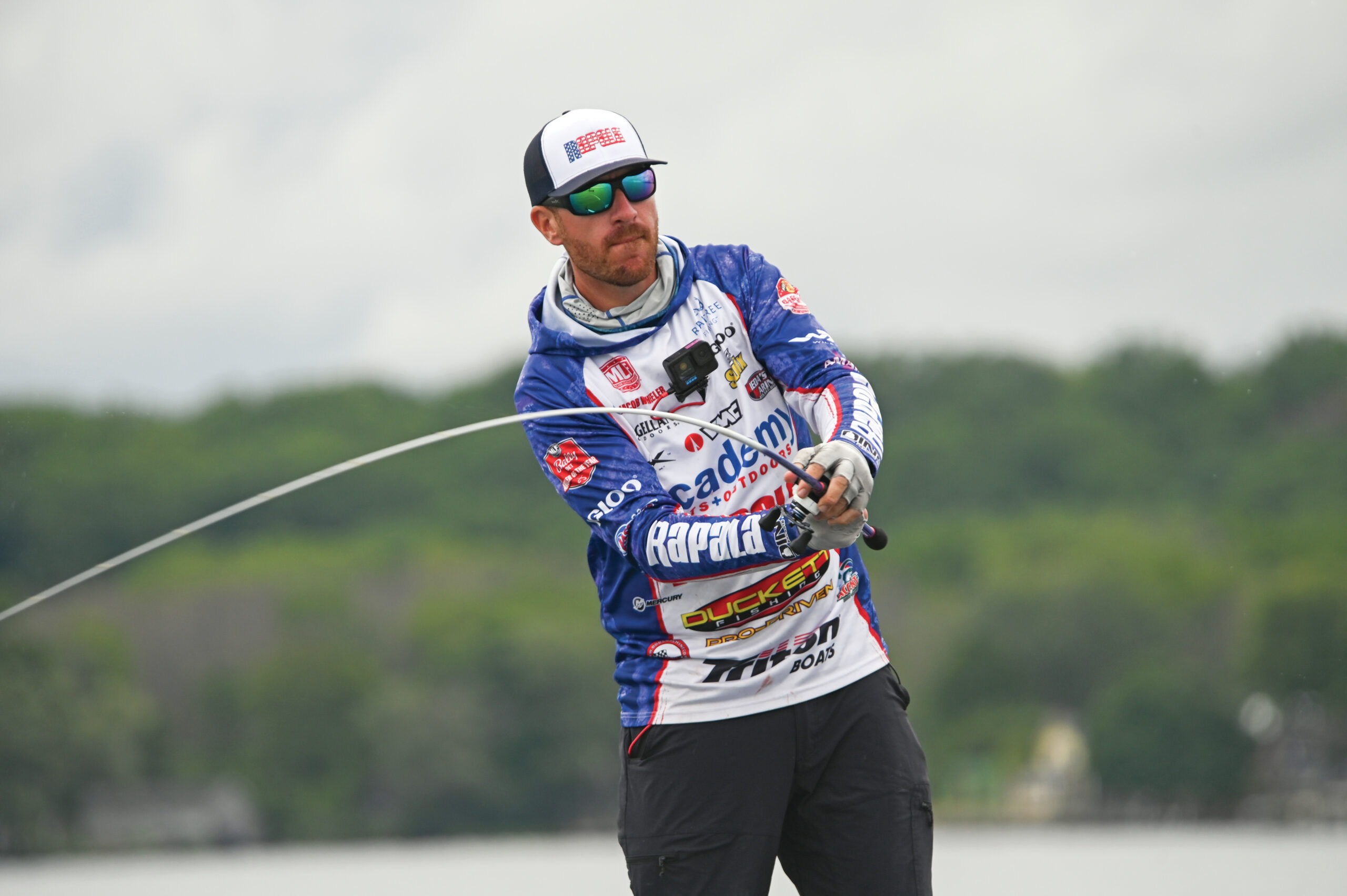
______
An Alabama rig generates a large image. It makes for a good practice bait when first learning to distinguish a specific object on the screen and how bass react to it.
Fishing for small, plentiful fish like white bass and crappie with small jigs can help hone your FFS skills, too. Big schools of fish that are easy to trigger will give your confidence a quick boost.
______
Knowing What You See
Two-time defending Bass Pro Tour Angler of the Year Jacob Wheeler is one of the most ardent fans of forward-facing sonar.
It’s a learning tool, first and foremost. Among its teachings:
- Those winter bass he thought were suspended are rising to his jerkbait.
- Bass relate not just to structure but to baitfish, too.
Rotating through a series of baits and studying how fish react to each has been part of his lab study. He notes that a simple change in bait color can make “some difference” in fish response, but not the big difference that fall rate or changing the profile of the bait can make.
On one outing, Wheeler noted that fish would either eat his drop-shot on the fall or follow it to the bottom when he used a 1/2-ounce dropper weight. With an 1/8-ounce weight, 90% would eat it on the fall.
“As it was dropping, it triggered a bite,” Wheeler said. “I caught four times the number of fish I was getting with the 1/2-ounce weight.”
Wheeler marvels at how much bass move and the fact that a well-chosen area is devoid of bass now does not mean it won’t host a hot bite later.
“I might fish an area in the morning without getting a bite at all, then come back three hours later and catch them on every cast,” he said.
The FFS screen can be dangerously seductive, as addictive to anglers as a smartphone is to a tech-addled teen. Even Wheeler has had trouble pulling his eyes from a faint fish image.
“If you use it as your only tool, it can negatively impact your fishing,” he warns.
Learning to use his Lowrance ActiveTarget has been more than a matter of menus and adjustments. The key is to understand what you see – and what you aren’t seeing.
“Part of the predator’s role is staying concealed,” Wheeler said, using the example of a smallmouth positioned behind a forward-positioned rock. “If you wait to see a fish before you cast, you’ll miss out on that fish.”
Wheeler believes fishermen have barely scratched the surface of what FFS has to offer. Its use as a shallow-water tool remains a frontier.
The biggest thing FFS has done for Wheeler is improve his efficiencies.
“I have better practices and make better decisions,” he said. “That’s because I can see what’s going on.”
Neal’s Tips and Observations
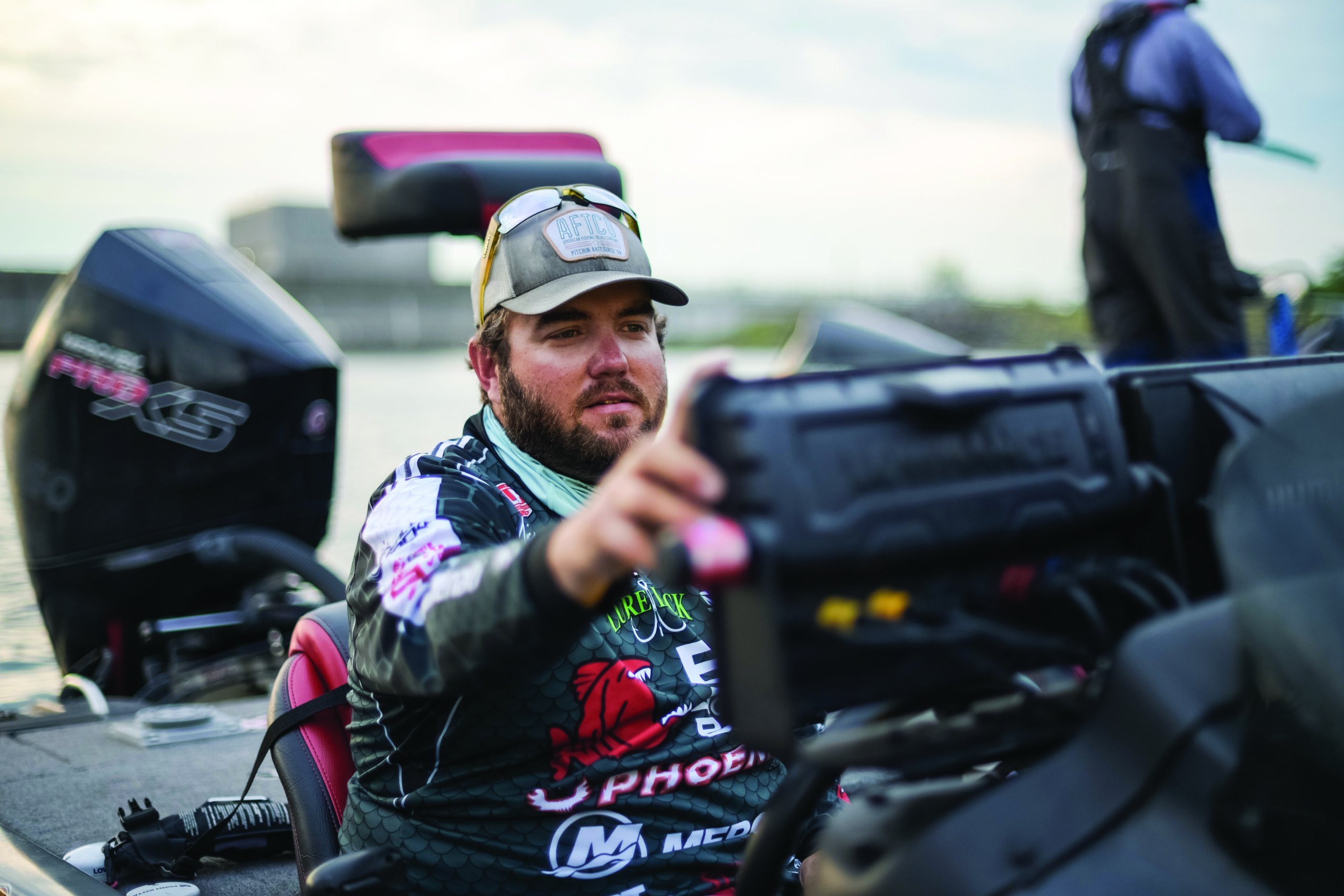
______
Bass seem to roam more freely in clean, clear water.
“In dirtier water, they want to see something to reference,” Michael Neal said.
Ideal sonar settings will vary from lake to lake and with varying conditions. The “auto” feature of his Lowrance ActiveTarget gives him a head start. He fine tunes from there.
“Don’t get too spread out on your distance settings,” he said. “I like to keep my setting at 80 feet or less.”
______
Bait is Life
When Lowrance ActiveTarget showed largemouth bass suspended over creek channels and draws at the Tackle Warehouse Pro Circuit opener on Sam Rayburn Reservoir this past January, Michael Neal had a chance to cherry-pick. He watched enough bass bite a SPRO McStick jerkbait to secure a win and a check for $100,000.
During Bass Pro Tour Stage Three on Alabama’s Smith Lake in March, forward-facing sonar alerted Neal to roaming schools of spotted bass feeding on blue herring. He lassoed enough nomadic spots with a Damiki-rigged Big Bite Baits Jointed Jerk Minnow and a drop-shot to earn a third-place finish.
“Forward-facing sonar has opened up avenues to bass we knew existed but didn’t know how to catch because they don’t relate to anything but bait,” the two-time defending Pro Circuit AOY said. “On Smith Lake, I caught them 5 feet down over 80 feet of water, just cruising and looking for bait.”
Witnessing large schools of bass trailing even bigger schools of baitfish with his electronics has been eye-opening. FFS gives him the confidence to tackle suspended fish – bass he would otherwise have had slim chance of reaching.
“You see how centered these fish are on bait,” Neal says of restless schools of smallmouth and spotted bass. “You can actually see how they swim inside a bait ball. Bait is their life.”
Swimbait-style baits presented with long casts and steady retrieves above the heads of bass comprise one approach to these bait-oriented suspended fish. Jerkbaits offer another.
“The window is just opening” for the development of baits made to maximize FFS advantage, according to Neal, who helped develop the Hybrid Swimmer, a swimbait-style bait with a forked tail on top and a small paddle tail below, for Big Bite Baits.
Ehrler’s Tips and Observations
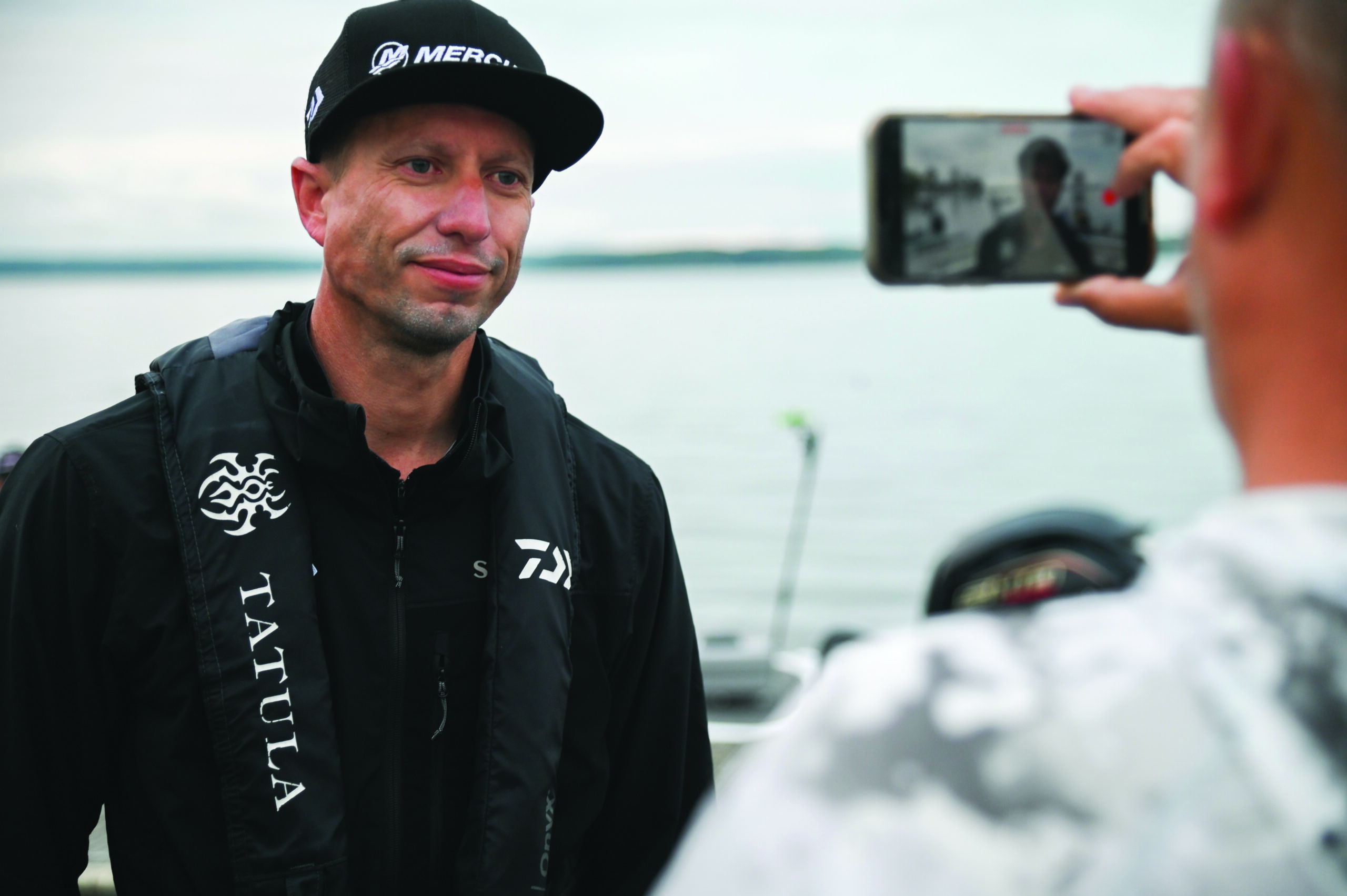
______
Brent Ehrler invariably sets his FFS at a fixed depth range, rarely using the “auto” setting. If he’s working 20 feet of water, he’ll set it for 30 or 35 feet. A deeper fixed range setting yields more detail and is particularly helpful in shallow-water applications.
Ehrler prefers Garmin’s black emerald palette for clearer viewing, but he warns that eyes and screen preferences differ. Find what’s best for you.
And don’t expect fish to be right on your waypoint. But they may well be close.
“They may have moved a hundred yards on a ledge,” he said. “With Panoptix, I can follow along the ledge, track them and catch them as they’re moving.”
______
An Instant Learning Curve
Winner of MLF’s first cup event on Lake Amistad, Brent Ehrler got his first taste of “live” fishing with Garmin Panoptix LiveScope on Lake Perris near his California home.
“I could see fish swimming through a brushpile, scurrying right to left,” he said. “It was right there, plain as day. My learning curve was instant.”
Looking at the activity of bass in their digitally simulated environment has elevated Ehrler’s awareness of bass behavior.
“The biggest thing I’ve learned is that there are way more fish down there than we think,” he said, noting that LiveScope accounts for all of his catches in at least two or three tournaments per season. “Lots of nomadic fish are simply moving with schools of bait. It’s also shown me how many fish don’t want to bite. When conditions aren’t right, they simply won’t bite.”
Ehrler has a simplified approach to target fish.
“I usually throw two different styles of lure: a fast bait and a slow bait. If they don’t hit one of those, they’re usually very hard to get to bite.”
For bottom-hugging fish, burning a crankbait is often his first choice, and his best chance of firing up the school. After that, he’ll throw a change-up – a drop-shot, a Neko rig or a jig.
Suspended fish offer opportunities to see bass track lures and react to any nuance in a retrieve, but there’s no guarantee that what turns them on at one location will work at the next.
“At one spot, fish may want it dead,” Ehrler said. “At the next, they want it faster.”
Reading Bass Body Language
Talk about the fish-finding advantages of forward-facing sonar, but what’s made forward-facing sonar the buzz of the bass world is how it has heightened the bass-fishing experience.
“For me, LiveScoping is an addiction,” said Spencer Shuffield, winner of the Tackle Warehouse TITLE in mid-August. “And not because it’s an easy way to catch them. It’s the anticipation of knowing. I’ve gotten to where I can read the fish’s body language on the graph. I see it perk up, see that it’s ready to eat, see it all come together.”
It’s the excitement of a frog bite – only better.
“LiveScope is so prolonged,” Shuffield said. “It’s like seeing that blow-up for five or 10 seconds. You know it’s going to happen.”
And the experience extends to a much wider range of settings – rocky flats, brushpiles, ledges, grass edges and open water with bass on the move.
“With forward-facing sonar, I’m able to just go hunting, especially if they’re in pockets or big bays or moving over big flats,” Shuffield said. “I can kick the trolling motor on 100, scan left and right and just hunt them down.”
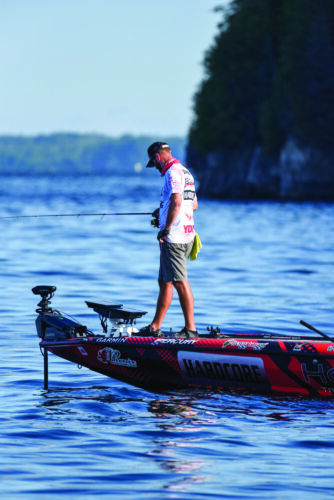
With FFS comes a heightened awareness that links a twitch, a pop, a cadence or any other bait maneuver with an immediate, real-time response from the fish. That imprints subtleties of presentation on mind and muscle memory in a manner never experienced before.
“You see that when you do something different, it makes that fish bite,” Shuffield said. “I just love it.”
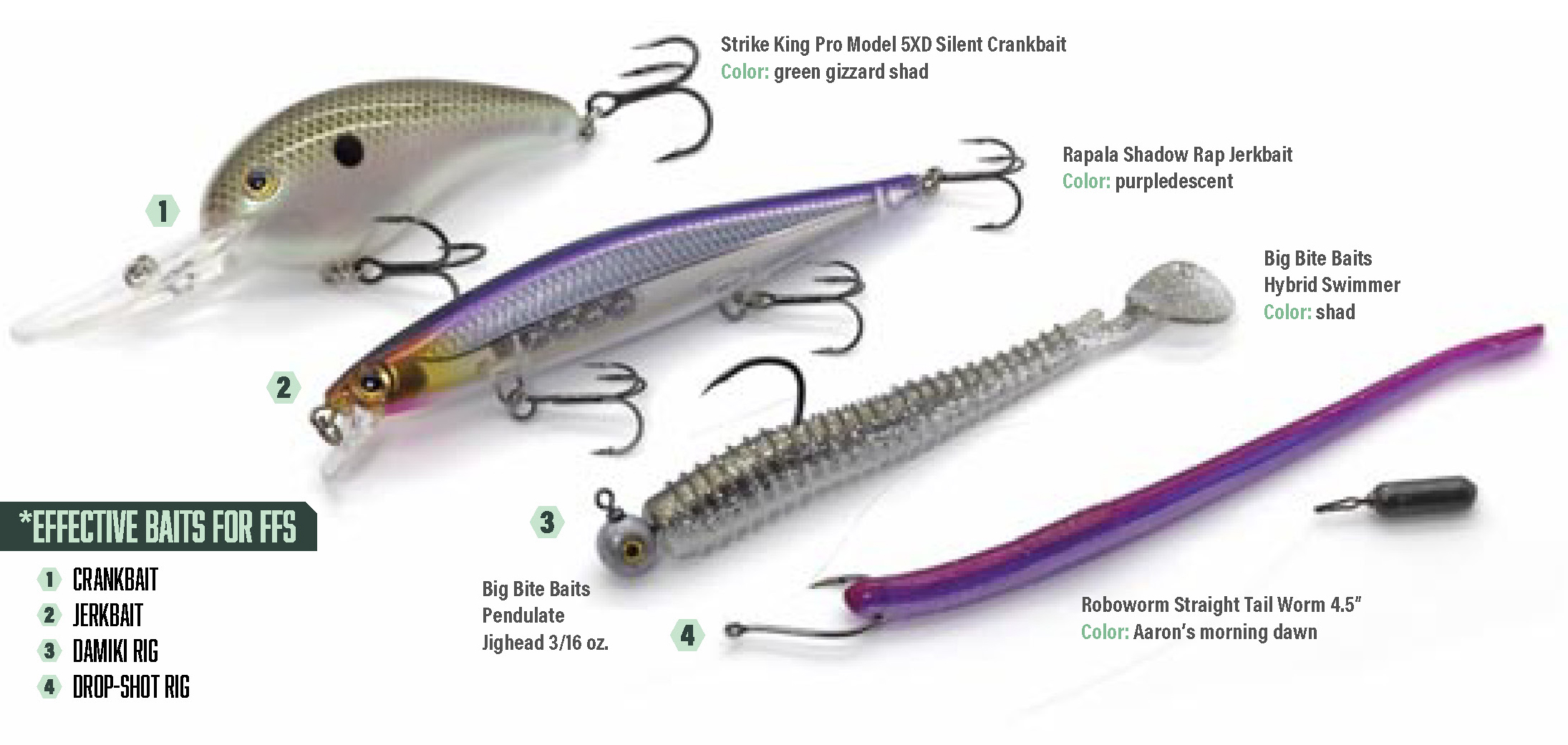
Dialing In Forward-Facing Sonar
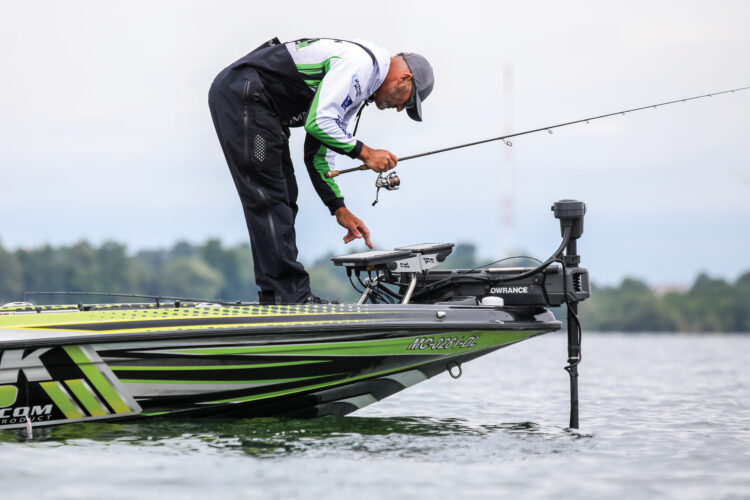
For Scott Dobson, MLF pro from Clarkston, Michigan, the smallmouth-rich waters of Lake St. Clair, Lake Erie and the Detroit River have proven to be the perfect training grounds for learning the finer features of forward-facing sonar.
After three seasons of experience with Lowrance ActiveTarget, Dobson has become intimate with this game-changing technology.
He offers these few tips to get the most out of FFS.
What you see is
Learn to decipher screen images. Learn to distinguish what a fish looks like and how to distinguish it from a stick or aquatic plant. Experiment with noise reduction and gain settings to optimize images for given conditions.
“You have to know the angle at which you’re picking up that fish, too,” Dobson said. “If you’re seeing the side of its body, that mark is different because it is a kind of blob on the screen. If the fish is in line with you, parallel with you, it’ll look like a hash mark.”
The right stuff
The biggest revelation in Dobson’s FFS learning experience was “having the right battery to run the power box.” His Lowrance ActiveTarget (Garmin’s FFS unit as well) has a separate amplifier box to power the transducer.
“Having lithium power going direct to the power box is critical,” Dobson said. “You want a constant 13 volts or more going all day. A standard lead battery or an AGM battery will lose voltage during the course of the day and degrade your image.”
Use the highest-voltage lithium battery you can use per manufacturer’s specifications.
A sense of distance
Your screen grid will indicate the distance of a given fish from your transducer, but do you have an accurate sense of what a 45- or 60-foot cast really is? Learn to accommodate for depth, too, so the bait reaches your target after the fall.
In the shallows
Although FFS “truly shines offshore” don’t dismiss it as a shallow-water tool as well.
“You’re not always seeing fish unless you’re over a flat bottom of, say, sand, gravel, chunk rock,” Dobson said. “You’re seeing what the fish live on, too – cabbage beds, stumps, boulders. If you don’t think there’s a fish on the other side of that object, you’ll be fooled.”
In the deep
Select a depth setting greater than the depth you’re fishing.
“If you’re fishing in 6 feet of water, set it at 10 feet,” he said. “If fishing 20 feet of water, set it at 30 feet.”
Don’t lose sense of your natural surroundings
It’s easy to get so caught up with the images on your sonar screen that you miss signs otherwise obvious to your senses – bass breaking the surface, birds hovering over baitfish, the backs of schooling bluegill. “Remember: it’s just another tool,” Dobson said.